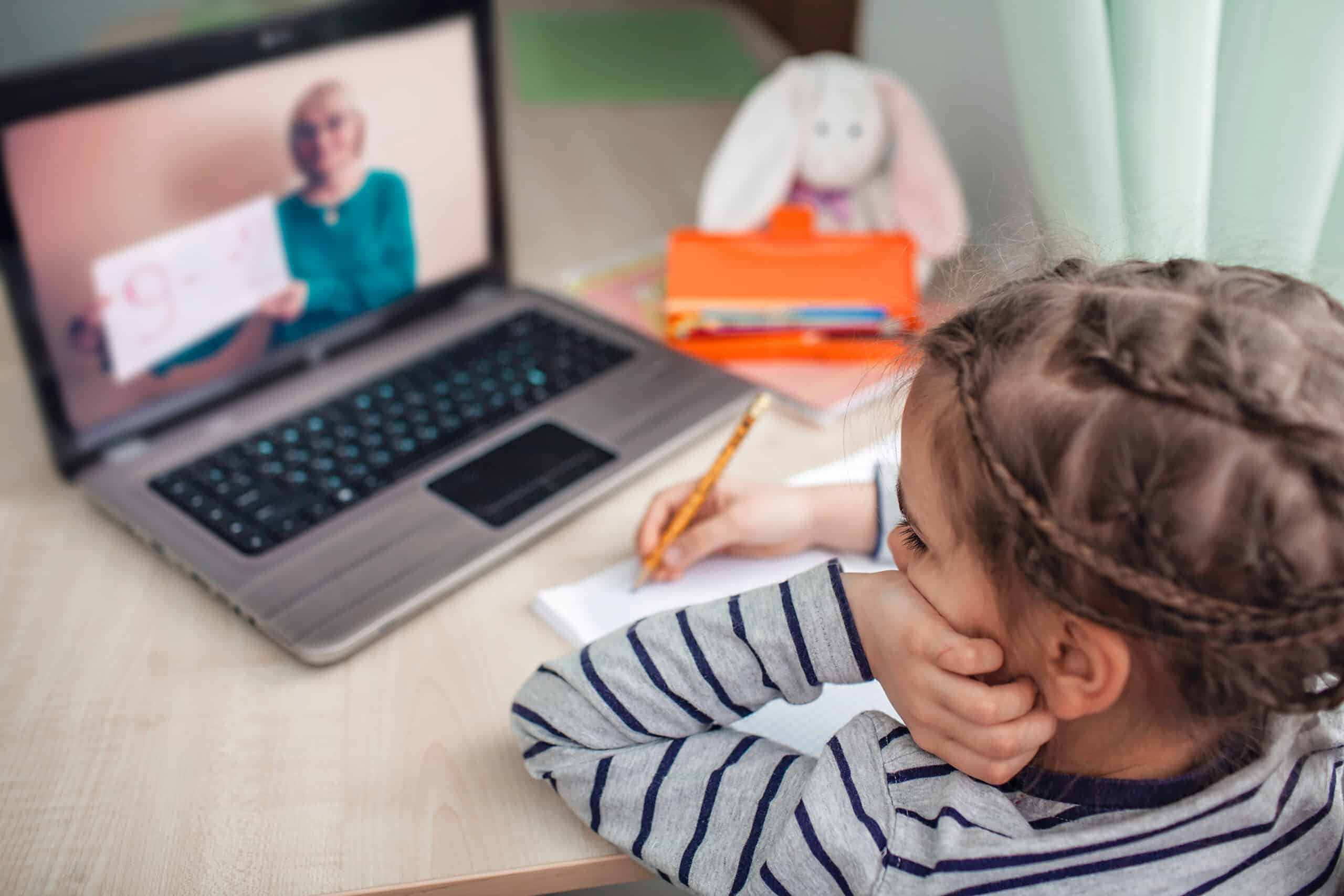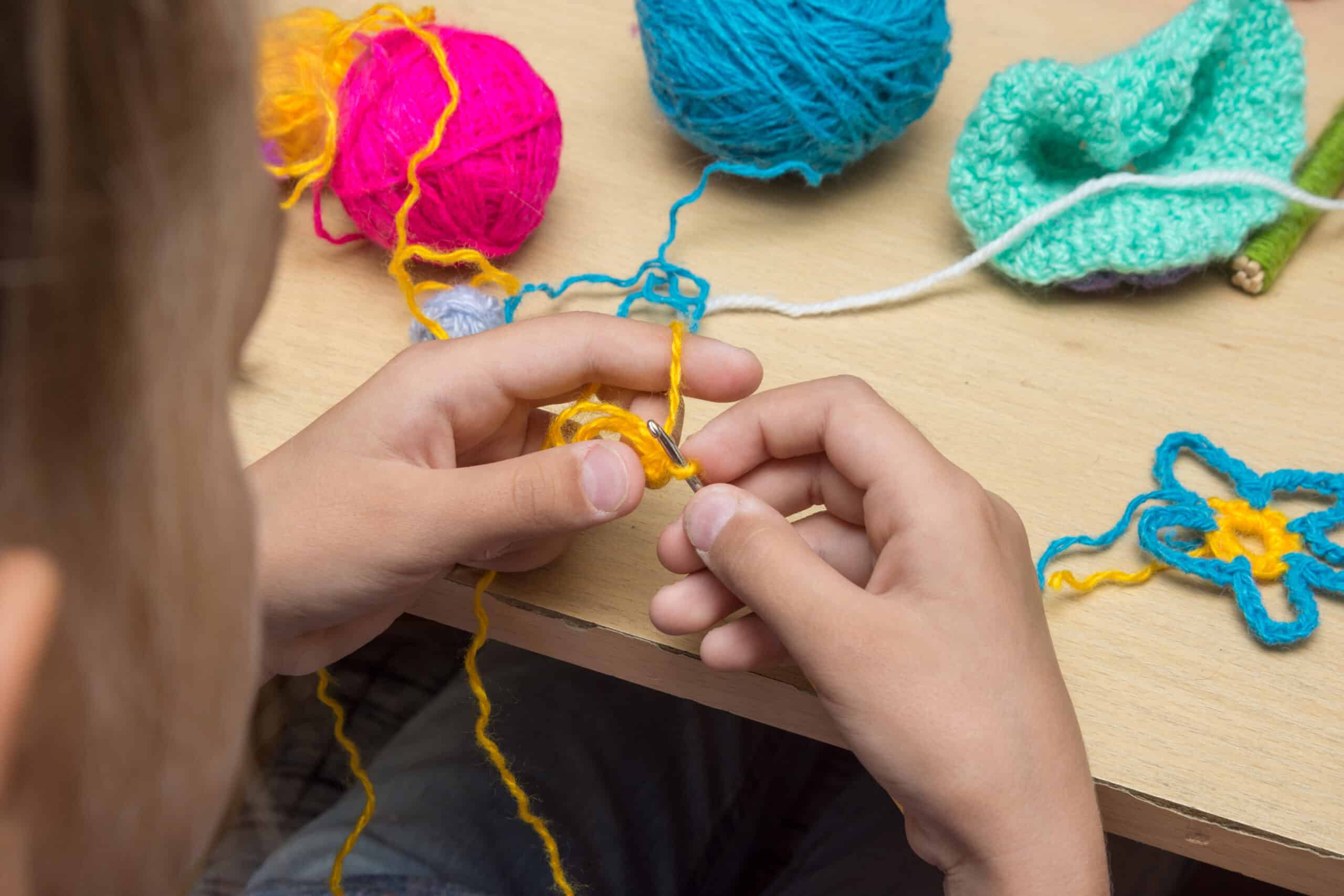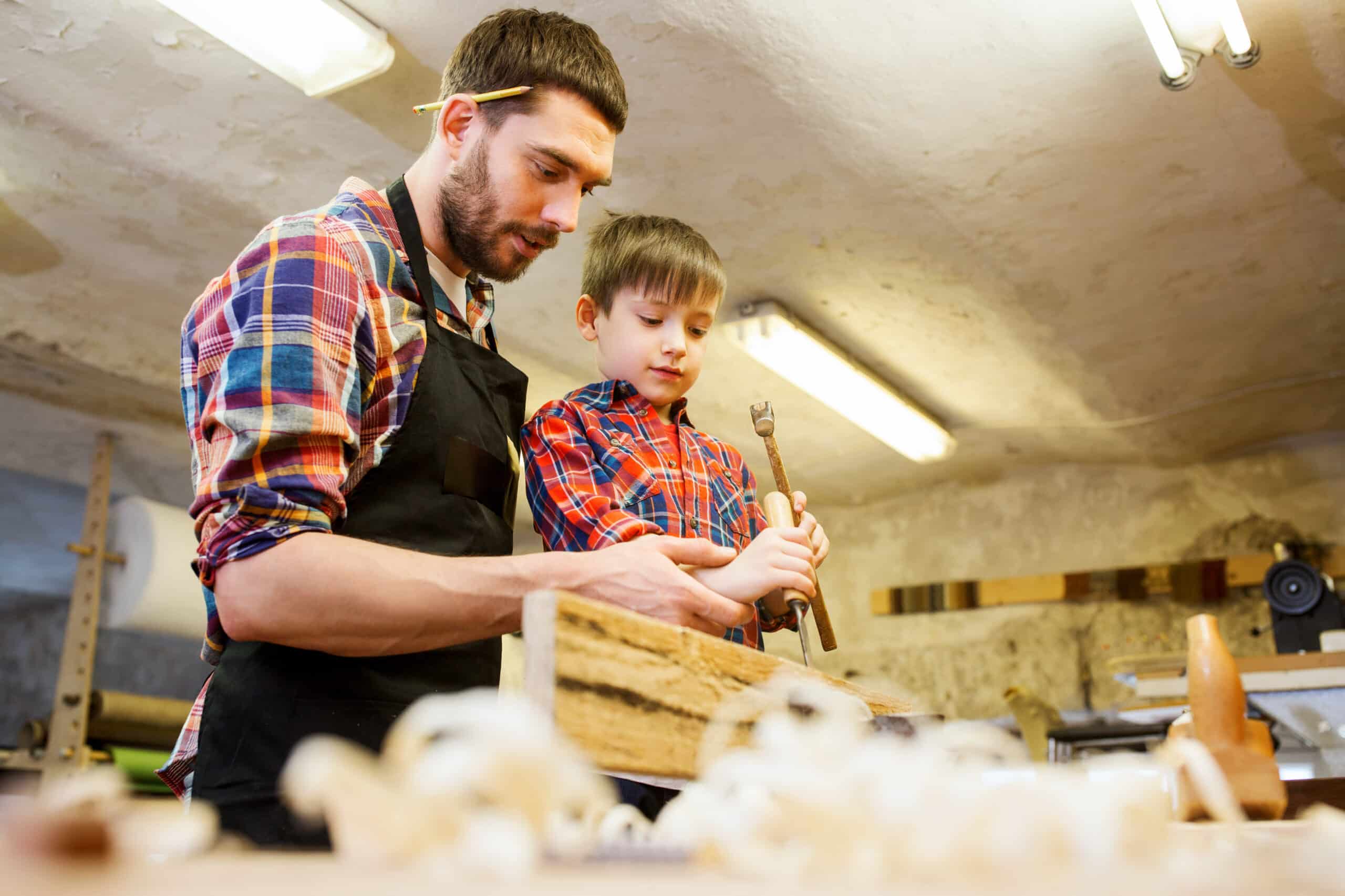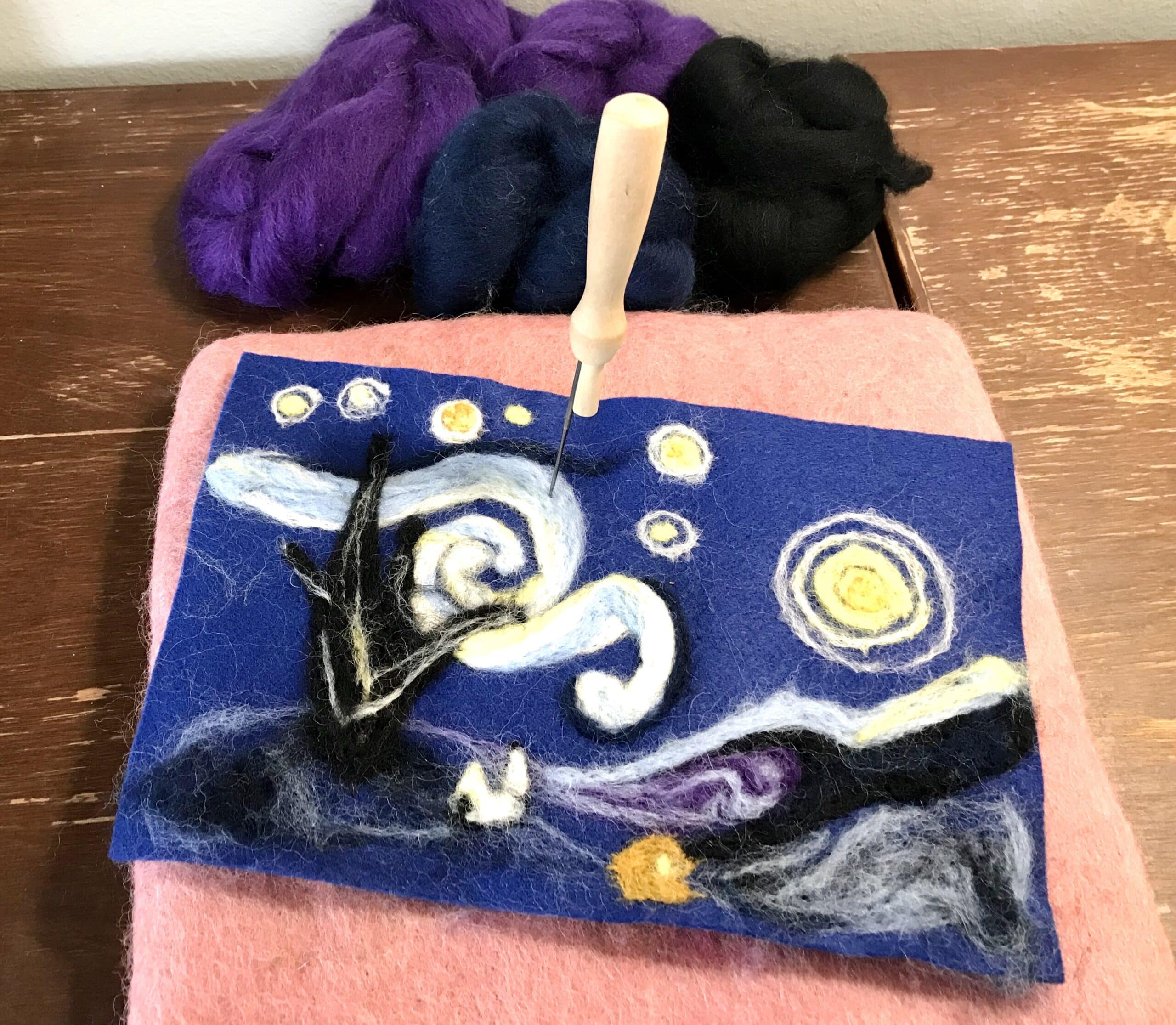During the first week of sheltering-in-place, my family’s carefully-organized life suddenly became a wide-open hole that filled quickly with Zoom meetings, online streaming, video marathons, and endless scrolling through social media.

Needing a break from the tentacles of technology, I created and mailed each of my kindergarten students a care package containing supplies for handwork. I realized my students would need tutorials, so I developed an e-book and several humorous videos of a puppet named Gordon learning to finger knit. The response from my students inspired us to share this project with you.
Handwork is not just busywork. The projects I chose develop real skills. Let me share three reasons you should join us as we do handwork with a purpose.
1. Deliberate practice grows mental strength.
Five-minute crafts are quickly accomplished and easily abandoned. However, handwork takes time and requires deliberate practice and focused attention to be successful. Because of this, the work will be cherished and valued. Your child will grow mental strength as they apply themselves to a task like finger knitting. And yes, before you ask, there will be mistakes. There is always a learning curve in learning a new skill. Mistakes provide the opportunity to begin again and to persevere through the difficulty.
Because creating an atmosphere of joy is crucial to maintaining a child’s attention, be sure to say, “It’s okay to begin again” or “Our next try will be even better than our last.” Pulling apart my own first try is one way I model starting over.
Though giving up is not an option, taking breaks and scheduling time to return to the job will maintain joy and impart value. In our videos, the puppet Gordon gets overwhelmed by the process and needs to take a break. We included this scene to assure parents that frustration is a normal part of learning a new skill. However, returning to the task and trying again is crucial to growing mental strength. With each session, you will get a little farther, and your child’s stamina will increase. Soon you will both discover that deliberate practice grows mental strength and produces the joy of a job well done.
2. Worthy work creates meaningful moments.
Worthy work is admirable and deserving of recognition. The recognition is not merely for the worker but for the work itself. Create meaningful moments with your child as you work side-by-side. Enjoy conversation and laughter as you grow and learn a new skill together. Then stand back and observe what you’ve created. Bonding occurs at a new level when you work this way.
There will indeed be moments of conflict, but don’t give up. I believe deep down, we all long for work that is worthy of our attention and deserving of recognition. What outcome does a video game or phone app provide that is worthy? But teach a child to whittle, weave, knit, build, plant, and sew, and you’ve given them a meaningful, worthwhile task.
When children discover they can use what they’ve created for the benefit of others, they’re inspired and eager to do more of the same. Each time they set out to begin, they will keep the feedback from their previous effort in mind and will take greater care and more time to perfect what they’ve created. The result of this endeavor for your child is the joyful discovery that their work matters.
(Check out Joleen’s 4 Steps for Growing an Entrepreneurial Spirit in Children!)
3. Joyful discovery encourages confidence.
There is wonder in the glittery, gluey paper creations of youth and nothing so sweet as the childish exclamation, “Look, what I made.” I am all for such craft euphoria. But the triumph of handwork is both the joy of accomplishment and the power of a newly learned skill. Handwork develops superior eye-hand coordination, precision, modulation of pressure, language skills, cause-and-effect understanding, and more. Students discover they are capable of bigger things as they build these skills.
{{cta(‘c0d03a5c-deb4-45a3-af3b-43924a7b1b87′,’justifycenter’)}}
The second grade class at Clapham is felting Vincent Van Gogh’s Starry Starry Night. They are using real felting needles, which requires focused attention and builds cause-and-affect understanding. Students learn that pressing the needle into the felt and the felting block beneath causes the fibers of the roving wool to adhere to each other. The consequences of a lack of attention may result in the stinging prick of a needle, but students cheerfully overcome and continue on because they are eager to accomplish the task. By the way, it is rare for a student to lose attention a second time. The joy of creating this work of art is evident in the smiles and exclamations of our students. Their joy-filled discovery of new skills and abilities is worth the effort and long hours required by both student and teacher.
We would love to have you join us in creating handwork with a purpose for your child. The links below will lead you to my website. The first chapter of my free e-book will walk you through how to teach finger knitting to your child, and the videos of Gordon may provide some laughter and encouragement. Subsequent chapters will teach felting, paper perforating, and painting on canvas.
GORDON ViDEO:
Clapham school would love to hear how handwork helped you during this time of shelter-in-place. Leave us a note below.
{{cta(‘beb57da0-56af-4364-b695-f272b30394cc’,’justifycenter’)}}
{{cta(‘6c4211c7-a244-493b-ae22-ec050a328d8b’,’justifycenter’)}}




